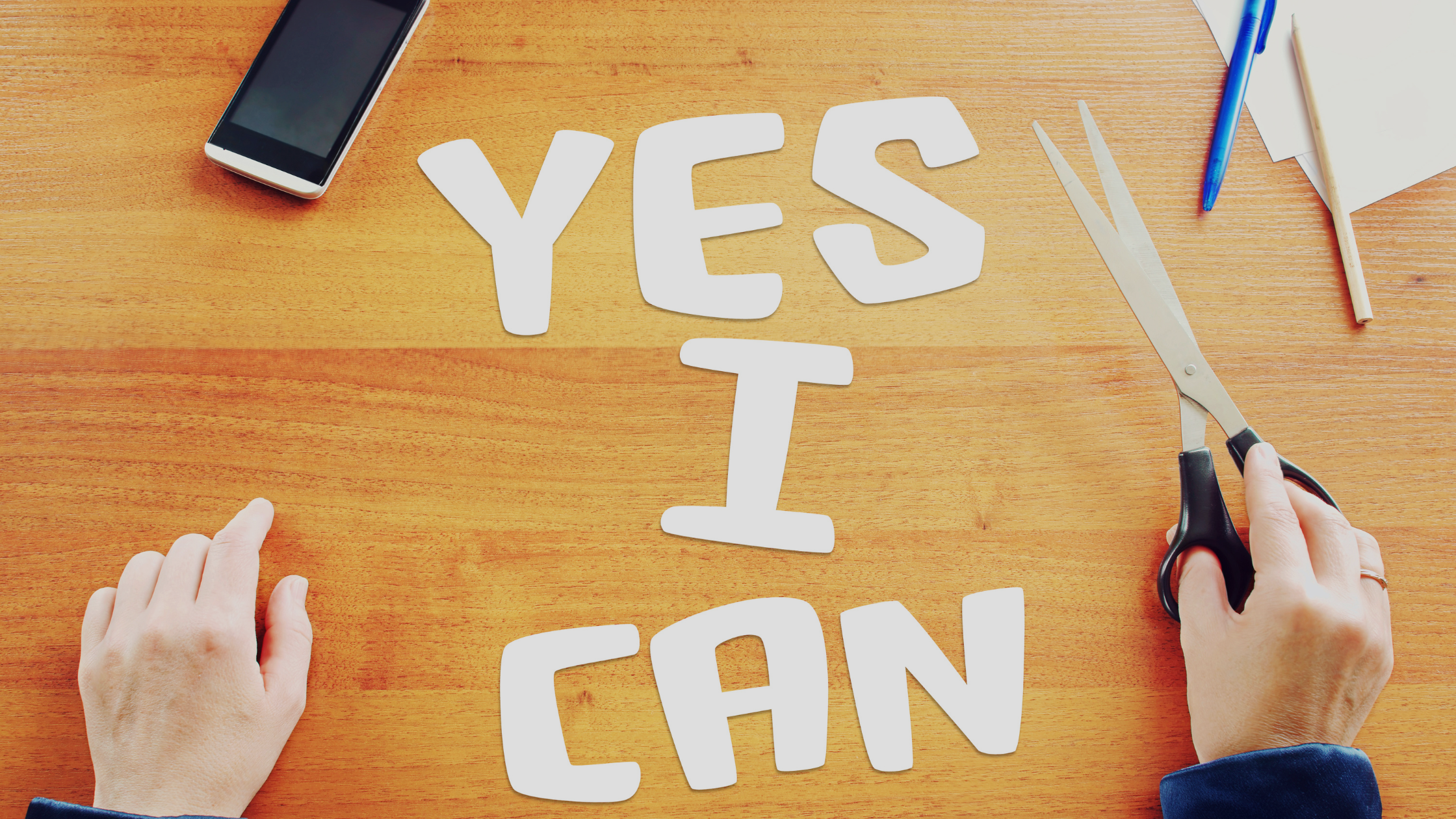If you’re an adult living with ADHD, you’ve probably experienced that frustrating feeling of being stuck, unmotivated, or tired of spinning your wheels. The good news? There’s a proven framework that can help you break through that cycle and start moving forward with confidence.
The ADHD self-coaching framework is a simple yet powerful structure designed to help you stop guessing and start taking action. Whether you’re looking to improve your time management, boost your productivity, or finally get organized, this framework provides a clear roadmap for success.
In this guide, we’ll walk you through all four steps of the ADHD self-coaching framework and show you exactly how to apply it to your life today.
Step 1: Evaluate – Get Clear on Where You Stand
The first step in the ADHD self-coaching framework is evaluation. This is where you gain clarity about your current situation before you can make meaningful changes.
What to Evaluate
Start by rating yourself across key areas that directly impact your daily life:
- Time management – How well do you manage your schedule and deadlines?
- Organization – How organized are your physical and digital spaces?
- Follow-through – How consistently do you complete what you start?
- Mental health – How are you doing emotionally and mentally?
You’ll also assess your lifestyle foundations—the fundamental pillars that affect ADHD symptoms:
- Sleep – Are you getting enough quality rest?
- Movement – How much physical activity are you getting?
- Nutrition – Are you fueling your body properly?
- Self-care – Are you prioritizing yourself?
How to Rate Yourself
Use a simple 1-to-10 scale for each area:
- 1 = You’re doing great in this area
- 10 = You’re really struggling in this area
The Key: Document Your Why
Don’t just assign numbers. Write down why you rated yourself that way. This helps you identify what’s actually going on and how to help yourself. Your notes might reveal a clear next step, or they might help you celebrate what’s already working well.
Remember: This isn’t about judgment. This is information to fuel your growth. Make it a habit to check in with your evaluation over time and track how you’re improving.
Step 2: Awareness – Notice What’s Holding You Back (or Moving You Forward)
The second step of the ADHD self-coaching framework is awareness. This is where the real transformation begins.
Awareness means paying close attention to what you’re thinking, believing, and doing—especially the patterns that are either helping you move forward or keeping you stuck.
Powerful Awareness Questions
Ask yourself these questions to uncover what’s really going on:
- What should I start doing?
- What should I stop doing?
- What am I believing about myself or my situation?
- Are my thoughts helping me or keeping me stuck?
- What could I think that’s just a little bit better than what I’m thinking right now?
Why Awareness Matters
You can’t change what you don’t notice. This step is how you start noticing.
When you understand what’s happening under the surface—your thought patterns, beliefs, and automatic reactions—you gain power. You can start making choices that actually serve you. Awareness helps you:
- Respond instead of react
- Notice patterns instead of repeating them
- Move forward with intention instead of spinning your wheels
The Practical Exercise: Free Write for Clarity
Here’s how to build awareness in real time:
- Set aside at least 10 minutes for writing
- Pick something that’s bothering you or just write about whatever comes to mind
- Don’t censor or edit yourself – let it all out
- Use pen and paper if possible – writing by hand slows us down and deepens thinking
Alternative methods that work just as well:
- Talk it out with a trusted person or alone
- Use voice note apps that transcribe your thoughts
Go Deeper: Analyze Your Thoughts
Once you’ve written or spoken your thoughts, go through them sentence by sentence:
- Can you name the feeling behind each thought?
- Is there an action to be taken?
- Do you feel better just having gotten it out of your head?
- Is the sentence even true? Challenge your thoughts.
What You’ll Discover
This awareness exercise reveals several things:
- Your thought patterns and recurring beliefs
- Whether you naturally skew more positive or negative
- Feelings you frequently experience
- The connection between your thoughts and your actions
Important reminder: Your thoughts are not you. But they do make you feel certain ways, and then you take or don’t take certain actions. With awareness, you know why—and what your next steps are.
Step 3: Systems and Skills – Build What Actually Supports You
Now that you’ve evaluated where you are and become aware of your patterns, it’s time to build the structures that will support you. This is step three: systems and skills.
Ask These Three Questions
To design systems that work for you:
- What could make this easier for me?
- What system or routine would help me stop forgetting or avoiding this?
- What skill might I need to practice to get better here?
Common Systems and Structures That Work
You might benefit from:
- Checklists for tasks you tend to forget
- Prep routines the night before (like laying out clothes or prepping meals)
- Visual reminders around your home or office
- Phone alarms and notifications for time-sensitive tasks
- Simplified processes when systems become too complex
The Key Insight: Your System Evolves
There’s no one-size-fits-all system for ADHD. What works for you might look completely different from what works for someone else. The beautiful part? Your system can evolve as you learn more about yourself.
Skills Are Learnable (Yes, All of Them)
Here’s something critical to understand: Skills like planning, organizing, prioritizing, and emotional regulation are learnable. You’re not supposed to know it all already.
The secret to success is practicing one small skill at a time. As you build these skills:
- Everything gets easier
- Your confidence grows
- You stop waiting for perfect conditions and start moving
- The momentum builds
Most ADHD coaching focuses on building systems and skills because that’s where real, lasting change happens.
Step 4: Show Up – Where the Shift Really Happens
The final step of the ADHD self-coaching framework is “show up.” This is where the real transformation occurs.
Make a Decision, Not Just an Attempt
Step four requires making a decision—not just to try, but to keep coming back to your commitment. This is the difference between wishful thinking and actual change.
Start Small and Specific
You don’t have to fix everything at once. Instead:
- Choose one area to focus on
- Make it specific – not “get organized” but “organize my desk” or “create a morning routine”
- Decide exactly when you’ll take action
- Decide exactly how you’ll do it
- You don’t need to feel perfectly ready – just ready enough to take the next doable step
Expect (and Embrace) Imperfection
Here’s what showing up really looks like:
- You might forget your commitment
- You might get off track
- You might hit resistance
- This doesn’t mean you failed
This just means you’re in the part where growth happens.
Add Accountability
The more you show up, especially when it’s imperfect, the more you build trust in yourself. That’s where transformation happens.
Add accountability through:
- A coach or therapist
- A trusted friend or accountability partner
- A visual tracker
- A weekly personal check-in
Accountability keeps you connected to your commitment even when motivation wanes.
Putting It All Together: The EASY Framework
Here’s your complete ADHD self-coaching framework:
- E = Evaluate where you stand
- A = Awareness of what’s holding you back or moving you forward
- S = Systems and skills to support your success
- Y = You show up, even when it’s imperfect
The Truth About Being Stuck
Here’s something you need to know: You are not stuck. You are just one decision away from momentum.
Momentum has a powerful property: once you’re moving in a good direction, it’s easier to keep moving in that direction. You don’t need perfect motivation. You just need to take the next action—no matter how small.
That’s how this framework works. It takes you from feeling stuck and unmotivated to building consistent momentum toward the life you want.
Free Workbook: Walk Through These Steps
If this framework felt helpful, there’s a free workbook available to guide you through all four steps. It includes:
- Space to evaluate each area of your life
- Prompts for your awareness writing
- Questions to help you build systems
- A tracking section for your show-up commitment
Grab your free workbook: www.learntothrivewithadhd.com/easy
Next Steps
You know what to do. You have the framework. The question now is: Will you take the next action?
Start with step one. Spend 15-20 minutes evaluating where you stand across the areas we discussed. Write down your ratings and your why. This single action will give you the clarity you need to move forward with confidence.
Remember: You’re not supposed to have it all figured out. You’re just supposed to take the next step. And then the next one. That’s how momentum builds. That’s how real change happens with ADHD.
Ready for Additional Support?
If you know what to do but struggle to put it into action without the right support, private ADHD coaching might be exactly what you need.
ADHD coaching provides the unique support and accountability necessary to make the change you know is possible. A coach helps you navigate obstacles, stay consistent, and build the confidence you deserve.
Book a free consultation: www.learntothrivewithadhd.com/services
Key Takeaways
- The ADHD self-coaching framework consists of four steps: Evaluate, Awareness, Systems/Skills, and Show Up
- Evaluation gives you clarity about where you stand right now
- Awareness helps you understand the thoughts and patterns keeping you stuck
- Systems and skills are the practical tools that support lasting change
- Showing up imperfectly is how you build momentum and transform your life
- You’re not stuck—you’re one decision away from momentum



